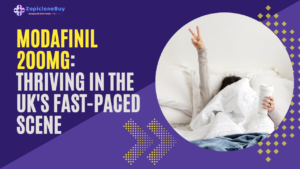Introduction
Zopiclone is a commonly used hypnosedative belonging to the Z-drugs category that is popular for short-term insomnia in people with sleep problems. Studies have shown that insomnia, or inability to initiate or sustain a healthy resting phase, is a chronic problem that affects 10-20% of the general population and has long-standing impacts on their social and personal lives.

Insomnia complaints (difficulty initiating or maintaining sleep, feeling unrefreshed at awakening accompanied by dissatisfaction with sleep quality or quantity ), when experienced frequently, can lower your performance on the job or in school, increase the risk of falls and accidents and lead to increased incidence of mental health disorders. In such situations, using Zopiclone can improve your sleep quality by reducing the time it takes you to fall asleep, increasing the amount of time you sleep, and decreasing the number of times you wake up.
How long can you take Zopiclone 7.5 mg for insomnia?
Despite its effects on sleep and insomnia disorders, Zopiclone is only indicated for a short period. Researchers unanimously agree that the approved adult dose should be 7.5 mg and used in doses of one tablet before bedtime for up to a maximum of 4 weeks.
It is essential to have a brief idea about Zopiclone and its mechanism of action to understand better the duration of its usage in people with insomnia tendencies.
A word on Zopiclone and its hypnotic properties
Zopiclone is a non-benzodiazepine hypnotic agent introduced in 1986 into Clinical practice. It belongs to the Z-drugs category of drugs, including the four main drugs Zopiclone, Eszopiclone, Zaleplon, and Zolpidem that, structurally unrelated, share some affinity for alpha-1 subunit of GABA A receptors concentrated in the cortex, cerebellum, and thalamus of the individual.
What makes it stand out from other Z-drugs is its much longer half-life of 6 hours with a long-lasting period. In a comparative study between Zopiclone and Zolpidem, the use of it was observed to cause a decreased time taken to fall asleep with an increased phase of S2 sleep ( that plays an important role in long-term memory consolidation and sensory processing, and protects the brain from waking up from sleep). Additionally, it results in a decrease in sleep latency in the mornings.
During the initial days of its use, it showed a hypnotic efficacy that was superior to a placebo but with limited data on its duration of usage. Recently, with a larger body of clinical data, researchers have observed that it is as effective as benzodiazepines in treating insomnia. Still, the risk of adverse reactions increases with long-term medicine use.
Additionally, Chronic use of Zopiclone was observed to result in less receptor adaptation owing to its thermodynamic interactions with the GABA receptors in the CNS. Short-term clinical trials of Zopiclone < or = 4 weeks improved sleep latency, sleep duration, reduced night awakening, and overall improved sleep quality with adequate tolerance.
Data from long-term studies about Zopiclone use are conflicting, and the potential for tolerance during long-term Zopiclone treatment is unclear. In a study conducted to evaluate the short, intermediate, and long-term effectiveness of Zopiclone ( eight weeks ) of it, eleven chronic insomniacs participated in a study that used ECG sleep recordings and a subjective rating scale to evaluate its effects.
Using Zopiclone decreased total wake time and nocturnal awakenings and increased the subjects’ sleep efficiency. The effects manifested from the first night of treatment and continued till the Eight weeks without any signs of tolerance to the hypnotic effects. The subjective sleep questionnaire data showed decreased sleep latency ( time taken to fall asleep ) and was consistent with the other laboratory findings. The use of Zopiclone reduced the percentage of Stage 1 sleep ( when a person starts to fall asleep wi slowing of brain activities ) but did not alter the percentage of Stage 2 sleep, slow wave sleep, or REM sleep.
Stage 2 sleep – light sleep with muscle relaxation
Slow Wave Sleep – Stage 3 period of non-rapid eye movement sleep
REM Sleep – period of deep sleep characterized by increased brain activity, heart rate, breathing, and blood pressure
More extended usage of Zopiclone further increased withdrawal effects after discontinuing the medicine, like rebound insomnia and daytime anxiety. A sleep laboratory evaluation of the long-term efficacy of it further elucidated the safety and effectiveness of Zopiclone in dealing with sleep problems.
The study included six patients between the ages of 25 and 59 with chronic insomnia that received it continuously for seventeen weeks after a drug-free interval of twelve nights. Patients evaluated their sleep by questionnaire and had sleep studies completed throughout active treatment. Its use of it significantly improved sleep quality with minimum changes in the sleep architecture because of its long-term usage.
The commonest side effect was a bitter or metallic taste without any changes in biological functioning noted throughout the study period. These findings indicated that it is a safe and effective medication that maintains its effectiveness on long-term use.
What can go wrong in the long-term use of Zopiclone?
One of the most crucial side effects associated with the long-term use of Zopiclone is the occurrence of rebound insomnia after withdrawal from the medication. Rebound insomnia occurs when the user’s body has become dependent on the medicines to help them fall asleep; if they quit taking them, their insomnia returns, or “rebounds,” in worse symptoms than before. Rebound insomnia can last anywhere from a few days to a few weeks, interfere with your day-to-day activities, and be challenging to deal with psychologically.
Additionally, Zopiclone withdrawal can give rise to intense anxiety effects manifested in tremors, palpitations, panic attacks, and an overall heightened sense of anxiety that occur a few days after the final Zopiclone dose. Initially, the effects are limited to a feeling of irritability with discomfort resulting from muscle spasms. This may progress into digestion problems with intense nausea, hallucinations, mood swings, and restlessness. The effects can proceed for up to five days before dissipating in intensity. But some symptoms like lethargy, depression, and disturbed sleep.
Conclusion
Zopiclone has a relatively low propensity to cause residual clinical effects like difficulty waking up or reduced morning concentration when in active use. Data from prescription-event monitoring have even suggested its low dependence potential. And it is well tolerated in elderly and younger patients with insomnia. The problem lies in its withdrawal effects after long-term use, which can induce physiological and psychological issues. To avoid this, it should be limited to 4-5 weeks. After that time, the drug should be tapered down in strength before discontinuing it.
Reference Links:
https://pubmed.ncbi.nlm.nih.gov/8241608/
https://www.sciencedirect.com/topics/neuroscience/z-drug
https://wchh.onlinelibrary.wiley.com/doi/pdf/10.1002/pnp.502





